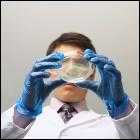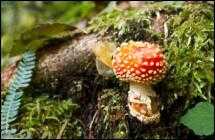Toxins
CDC has developed specific and sensitive methods to help diagnose, treat, and prevent diseases caused by toxins. Toxins from bacteria, fungi, algae, and plants are some of the most deadly chemicals known and represent an ongoing public health threat.
Laboratory Response to Toxins
In an emergency, the Division of Laboratory Sciences' advanced laboratory techniques allow scientists to
- Deliver results rapidly. CDC's toxin methods are the most rapid tests available, allowing for definitive answers within hours of receiving the samples.
- Analyze more samples. An equipped laboratory can measure hundreds, or even thousands, of samples each day.
- Quantify toxins to track course of infection. Clinicians can use these methods to track the success of the treatment by looking at the decrease of toxins in the body.
- Characterize various toxin forms and subtypes. The ability to characterize toxins allows scientists to confirm the likeliness of a common source of toxin in a natural or terrorist event.
DLS continuously researches toxins and works toward
- Developing new test methods; especially for priority toxins including ricin, abrin, SEB, shiga toxins, gonyantoxins, and brevetoxins.
- Using advanced technology to diagnose, treat, and prevent toxin related diseases throughout the world, in particular, toxin laboratory methods have been used on aflatoxin, anthrax, botulism,ricin, saxitoxin and neosaxitoxin cases.
- Transferring its methods to federal, state, and private laboratories to increase testing capacity during emergencies involving toxins.
Toxins from Bacteria

- Anthrax lethal toxin is produced by Bacillus anthracis. The anthrax toxin proteins, including anthrax lethal factor, work together to disrupt a cell's defense system.
- Botulinum toxin, produced by Clostridium botulinum, is one of the most poisonous substances known. It causes botulism, a severe muscle-paralyzing disease, which affects an average of 200 persons living in the United States each year.
- Pertussis toxin is produced by the Bordetella pertussis bacteria which causes whooping cough.
- Staphylococcal enterotoxin B (SEB) is the toxin most often associated with food poisoning.
Toxins from Fungi and Algae
- Aflatoxins are produced by many species of the fungus Aspergillus, which commonly contaminates corn (maize) and other types of crops during production, harvest, storage or processing. At high doses and over long periods, aflatoxin is known to cause acute and chronic liver injury and cause liver cancer. Aflatoxins are considered unavoidable contaminants in the U.S. food supply, especially in corn and peanuts, and levels are regulated by the Food and Drug Administration.
- Saxitoxin and neosaxitoxin are produced by several species of marine and fresh water algae and blue-green algae (cyanobacteria). When these organisms are present in high concentrations, the toxins may build up in filter-feeding shellfish, such as clams and oysters. Paralytic shellfish poisoning (PSP) is a severe form of poisoning causing paralysis and death if left untreated.
-
 Amanitin toxins are produced by the poisonous death cap mushroom (Amanita phalloides). Health effects may include liver and kidney failure and death.
Amanitin toxins are produced by the poisonous death cap mushroom (Amanita phalloides). Health effects may include liver and kidney failure and death.
- Other toxins from fungi and algae vomitoxin (deoxynivalenol), diacetoxyscirpenol, and T-2 and HT-2 toxins. These mycotoxins affect up to 25 percent of the world's grain supply. All of the mycotoxins are considered bioterrorism threat agents.
Toxins from Plants
- Abrin, found in the seeds of the rosary pea, is one of the most poisonous plant toxins.
- Ricin is a poison found in castor beans. Each year, tons of castor beans are grown to produce castor oil.
Both ricin and abrin work by entering human cells and preventing the cells from making the proteins they need. Without the proteins, cells die. This is harmful to the whole body, and the patient may die.
Additional Resources
Get email updates
To receive email updates about this page, enter your email address:
Contact Us:
- Centers for Disease Control and Prevention
1600 Clifton Rd
Atlanta, GA 30333 - 800-CDC-INFO
(800-232-4636)
TTY: (888) 232-6348 - New Hours of Operation
8am-8pm ET/Monday-Friday
Closed Holidays - Contact CDC-INFO


